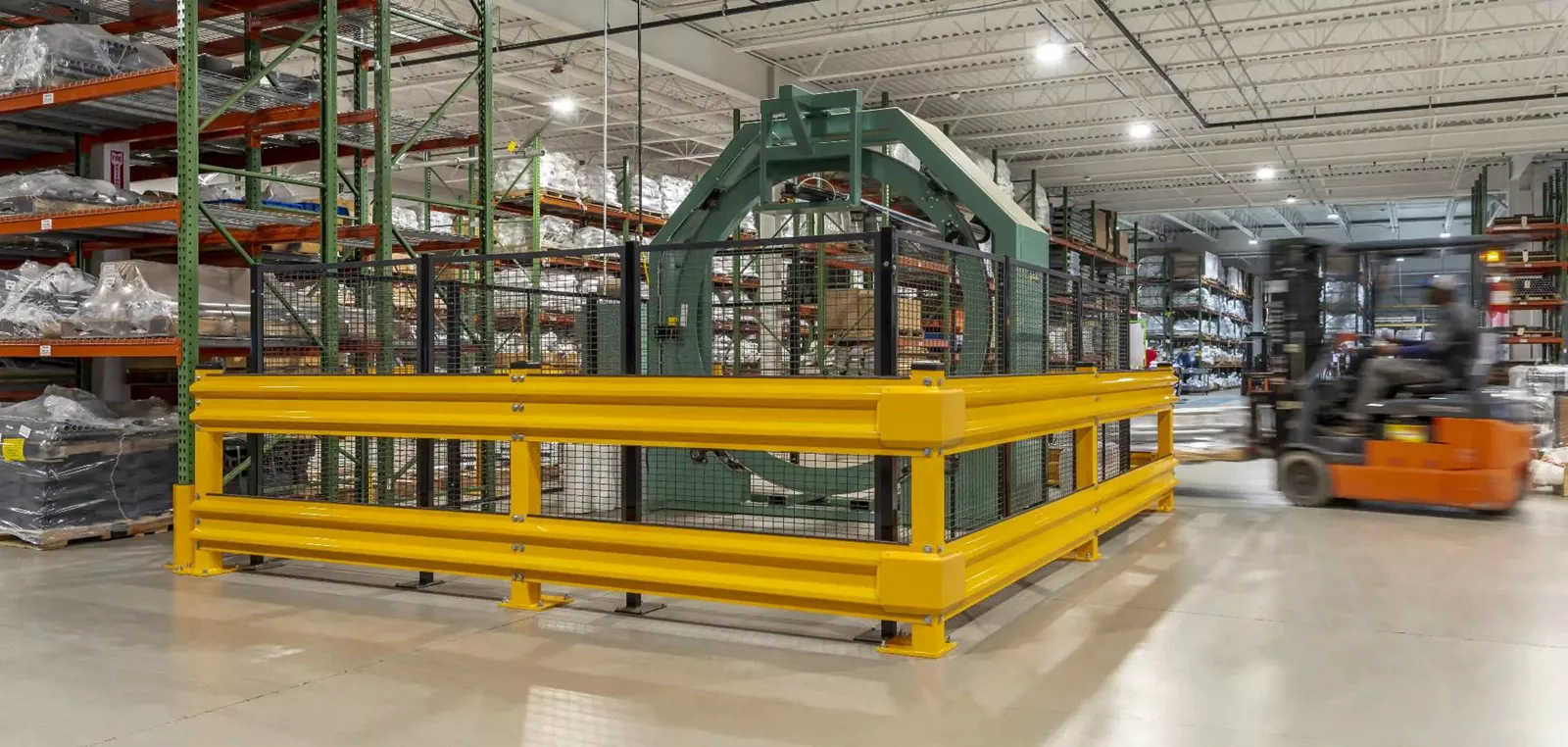
You are visiting the Canada Kee Safety website from United States. Would you like to go to the United States site?

Is there a job more fun than driving a forklift?
Operators can spin around corners, race down aisles, and lift large loads with a sense of ease and empowerment.
Sounds like fun, but when working in a warehouse, responsible forklift drivers need to take appropriate care and caution to protect themselves, their colleagues, and the surroundings. Forklift Rivews cites regulatory assessments that 11% of all forklifts—one out of nine—are involved in an accident every year.
Driver training is critical, but it takes more than awareness and training to guard against forklift mishaps and other plant perils. That is why safety barriers are vital to comprehensive warehouse protection for vehicular and foot traffic.
The Excellence in Manufacturing Consortium reports that most forklift accidents involving people do not injure the driver; rather, the workers near the vehicle. According to industry estimates, forklift accidents involving pedestrians account for approximately 20% of non-fatal accidents and 13% of fatalities.
Safety railing systems can create pedestrian passageways in a warehouse and provide a robust physical barrier to separate people from the hazards of forklift traffic. For the inevitable crossing points, floor markings and safety gates alert walkers and drivers to the danger. At highly trafficked intersections, an overhead walkway—with stair and platform handrails—might be the best solution.
A warehouse has no lack of stationary targets for forklifts and sweepers as well as errant carts and hand trucks. Even the most conscience forklift drivers can suffer fatigue, battle poor sightlines, need to squeeze down narrow aisles, and deal with poorly stacked or packaged loads. Where there is a “culture of safety,” there will be safety barriers throughout the plant.
The Building – Walls, doorways, and support columns are obvious points for protection. Piping and ductwork can sustain significant damage from an accident.
Guardrails protect long or short stretches of walls, in-plant offices, and other areas. Bollards, column guards, cable guards, door guards, pipe guards, and corner guards provide safety barriers for specific and vulnerable spots in a warehouse.
The Equipment – Investments in conveyors, scissor lifts, scales, wrapping machines, and other material handling equipment can be protected by railing systems, guardrails, and bollards.
The Loading Dock – Upright and overhead posts provide effective door guards, and safety railings offer protection for workers at the bays of loading docks.
The Goods – Whether raw material or finished product, the heart of a warehouse is what is stacked on the racks, shelves, and in the lockers, bins, or other storage areas. Even a minor collision can cause considerable damage and financial loss.
Floor guides and angles, pallet rack guards, corner guards, and rack guards offer application-specific protection. Guardrails, bollards, and railings provide general heavy-duty protection.
A job should be fun, and it is more fun when it is safe. Driving a forklift is an important and rewarding job that can be safer for the driver, fellow workers, and the facility when proper safety barriers are installed where needed.

Long recognized as a leader in rooftop fall protection, Kee Safety has an expanding set of solutions to protect
people inside and outside the facility. Our safety experts bring decades of compliance experience to become
your partner in protecting people from the most dangerous hazards on your site. Focusing on both the welfare
of your people and the profitability of your operation, our tried and tested safety products are built to ensure
consistent performance at the highest level.
Download our Interior Fall and Impact Protection Brochure